Organization of the yeast Golgi complex into at least four functionally distinct compartments
- PMID: 10637300
- PMCID: PMC14766
- DOI: 10.1091/mbc.11.1.171
Organization of the yeast Golgi complex into at least four functionally distinct compartments
Abstract
Pro-alpha-factor (pro-alphaf) is posttranslationally modified in the yeast Golgi complex by the addition of alpha1,6-, alpha1,2-, and alpha1,3-linked mannose to N-linked oligosaccharides and by a Kex2p-initiated proteolytic processing event. Previous work has indicated that the alpha1,6- and alpha1,3-mannosylation and Kex2p-dependent processing of pro-alphaf are initiated in three distinct compartments of the Golgi complex. Here, we present evidence that alpha1,2-mannosylation of pro-alphaf is also initiated in a distinct Golgi compartment. Linkage-specific antisera and an endo-alpha1,6-D-mannanase (endoM) were used to quantitate the amount of each pro-alphaf intermediate during transport through the Golgi complex. We found that alpha1,6-, alpha1,2-, and alpha1,3-mannose were sequentially added to pro-alphaf in a temporally ordered manner, and that the intercompartmental transport factor Sec18p/N-ethylmaleimide-sensitive factor was required for each step. The Sec18p dependence implies that a transport event was required between each modification event. In addition, most of the Golgi-modified pro-alphaf that accumulated in brefeldin A-treated cells received only alpha1,6-mannosylation as did approximately 50% of pro-alphaf transported to the Golgi in vitro. This further supports the presence of an early Golgi compartment that houses an alpha1,6-mannosyltransferase but lacks alpha1,2-mannosyltransferase activity in vivo. We propose that the alpha1,6-, alpha1,2-, and alpha1,3-mannosylation and Kex2p-dependent processing events mark the cis, medial, trans, and trans-Golgi network of the yeast Golgi complex, respectively.
Figures
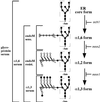
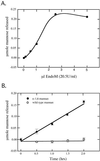

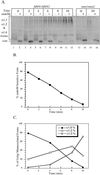
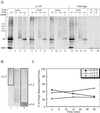
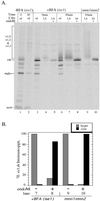


References
-
- Baker D, Hicke L, Rexach M, Schleyer M, Schekman R. Reconstitution of SEC gene product-dependent intercompartmental protein transport. Cell. 1988;54:335–344. - PubMed
-
- Barlowe C, Orci L, Yeung T, Hosobuchi M, Hamamoto S, Salama N, Rexach MF, Ravazzola M, Amherdt M, Schekman R. COPII: a membrane coat formed by Sec proteins that drive vesicle budding from the endoplasmic reticulum. Cell. 1994;77:895–907. - PubMed
-
- Bussey H. Proteases and the processing of precursors to secreted proteins in yeast. Yeast. 1988;4:17–26. - PubMed
-
- Dubois M, Gilles KA, Hamilton JK, Rebers PA, Smith F. Colorimetic method for determination of sugars and related substances. Anal Chem. 1956;28:350–356.
Publication types
MeSH terms
Substances
Grants and funding
LinkOut - more resources
Full Text Sources
Molecular Biology Databases

